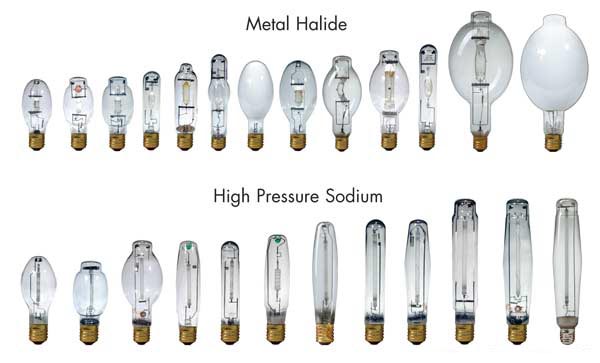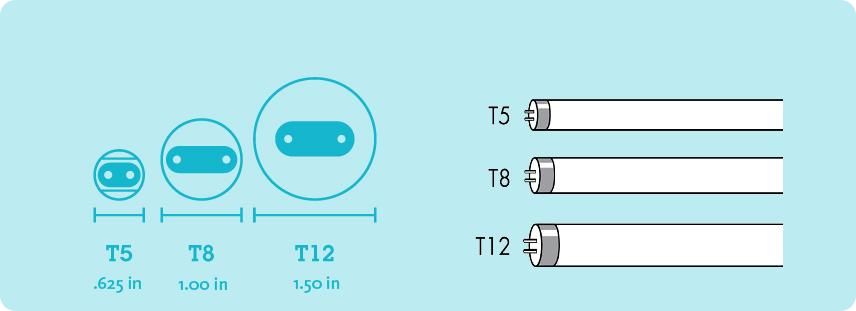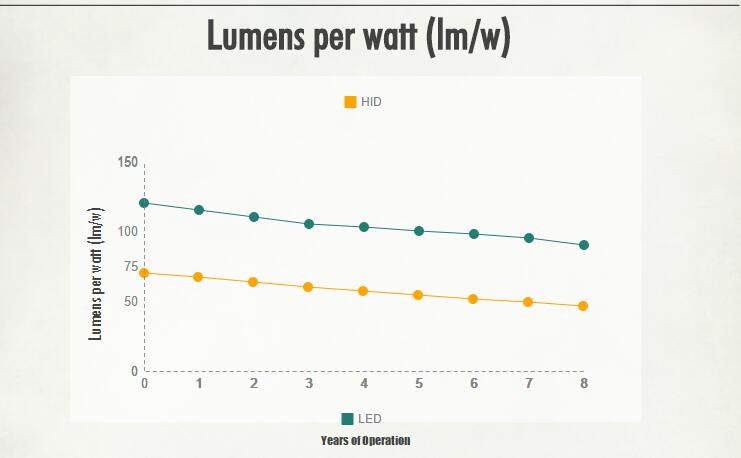A Closer Look At Light Loss Factor
Time:2016-03-08 Views:4519 Compile:SUNPER
Light loss factor is a major one and is commonly referred as LLF. It is simply the multiplying factor in which the light output may be changed mostly because of the environmental impacts as well the product degradation. The Lamp Lumen Depreciation which is commonly abbreviated as LLD, another LLD for Lamp Dirt Depreciation , LATF for Luminaire Ambient Temperature as well as the Ballast Factor (BF) are among the common factors that widely affect light output. These four factors are the major ones and hence the ones to mostly focus on.
It is worth noting that all the light sources including LEDs are normally affected by the LLF. Some are affected greatly than others. The total amount of light given to any work plane may be reduced by even 80 percent. Some of the LED fixtures are somehow unique since they are affected easily by LLD and sometimes by the LATF. The LLD factor is set by the sources manufacturer. Most of the manufacturers usually publish information in some lamp catalogs that include incandescent, HID, induction, LED sources and also Fluorescent. All of them have the LLD factor.
The HID lamps have improved significantly for the last ten years. Most of these improvements have occurred in the low wattage range. The upper wattage which is in the range of 750 watts and 2000 watts have only had a few improvements. One of the best improvement came due to the development of the Pulse-Start technology whereby it replaced the initial Probe-Start products. The development also brought the long lasting lamp with good color stability and long lifespan of the lamp. Mostly, the metal halide Probe Start HID products did have the LLD factor of about 0.65. The recent pulse start technology has been able to decrease this factor to 0.80. In contrast to this, some oldest HID technology has put a fight against the LEDs. These are the High Pressure Sodium (HPS) as well as its predecessor Low Pressure Sodium shortned as (LPS). LPS has been into the existence since 1920s and produced up to 200 lm per watt initially.
Nowadays, the best LED products being produced are usually less than 150 lm per watt. LPS is known mostly due to its monochromatic light. Its popularity is also due to its simplicity in filtering out the color thereby allowing the telescopes to see far into the space. The LPS lamps are affected by LLD if it has a factor of about 0.75. The HPS lamps are efficient just like the LPS as they deliver almost equally. Initially, they were delivering 130 lm per watt.

This technology is widely used even nowadays. The wide use of this technology is mostly due to its relatively low costs and also low maintenance needed. The LLD factor of it is 0.90. As the LEDs technology continues to develop and improving their efficiencies, the HPS has started fading away gradually. The fluorescents have also been undergoing improvements for the last years. Their improvements are mostly attributed to bring better phosphor coatings, electronic ballast technology, improved chemical mixtures as well as many others.
The initial T12 fluorescents are now over the map. This is due to LLD. The LLD factor ranges from 0.72 to 0.88. It depends on the kind of the manufacturer and lamp you are considering. Due to theT8 technology combined with the electronic ballasts, the manufacturers of the fluorescent lamps have improved the range to be between 0.85 and 0.95. The newest technological breakthrough for the fluorescent lamps came when the T5 lamp was released.

Another great change in their performance came when there was switch from the traditional ballasts with typical ballast factor. The factor ranged between 0.65 and 0.88, thereby giving manufacturer a higher range. By overdriving the light source, one can reduce the lifespan of that light source. This is mostly seen in the 1500 watts metal halide lamps. They are essentially 1000 watt lamps and are usually driven at 1500 watts. The rate at which the fluorents are being overdriven is not so dramatic due to the degradation that is caused by over driving of lamps. For the LEDs, they are resistant to this if their Tj (Thermal Junction Temperatures) are managed properly.
For the halogen and incandescent lamps, they have undergone few changes apart from improvements in the process of manufacturing. This helps in creating a uniform life expectancy due to the slight variations of gasses in the lamps. This improves their efficiency by some parts. The LDD is more dependent to fixture construction. Fixtures are usually constructed using enclosed lamps, bare lamps with different levels of the sealed housing.
The size and volume of debris in any fixture may affect performance of the luminaire. Even those fixtures which have been designed to be housed may allow air to get in and out. If the fixtures are well sealed, the fixture will start to heat up if light source is turned on and thus there will be air inside expanding and potentially pushing in out. If the source is turned off, the air inside starts to contract thereby creating a vacuum and pulling air inside along with debris and dust. With time, accumulation of dust affects the performance of the fixture. Therefore, this kind of fixture may have huge losses to the environment.
ForLuminaire Ambient Temperature LATF, it affects all the sources apart from the incandescent lamps. Their output is not affected by variants such as coldness or hotness. Contrary, the fluorescent lamps is affected by extreme weather. These lamps do perform best at their peak of 77F. They perform less than 100 percent if they are operated at other temperatures. For the metal halide lamps, they strike in both very cold and hot weather conditions. Once they do that, they operate very efficiently at almost all temperatures.
Induction does not like operating in hot or moderate climates. The induction lamps experience has reduced lumen output as well as shortened the life spans. In cooler and mild environment, the life of induction is 100,000 hours. LEDs like cooler environments as they are designed to work in such places. However, they can be redesigned to function in other climates such as desert climates if required . Lights that are operated in usual conditions and serviced well, they are likely going to have a Light Loss Factor around 0.4 to 0.7. The life span of the LEDs is much longer despite having an LLD as compared to others.

More Post
Harms That Poor Lighting In Your Building Can Do To Your Workforce
Next:How To Calculate The Lighting Costs For Metal Halide Fixtures
User comments
Your current input 0 characters(Reply for at least 6 characters)。
Online Services

Mobile: +86 18938902515 (Mr.Allen)
Tel:+86 755 23159099
Fax:+86 755 61673151
E-mail: sales@sunper.net
zip code: 518108











